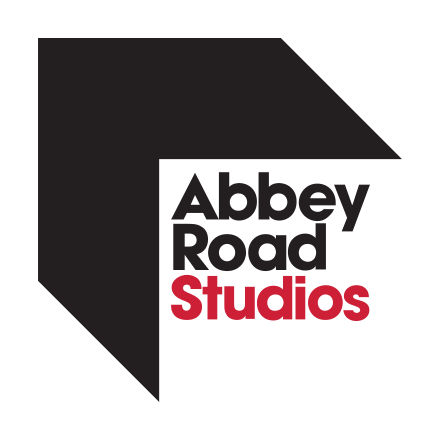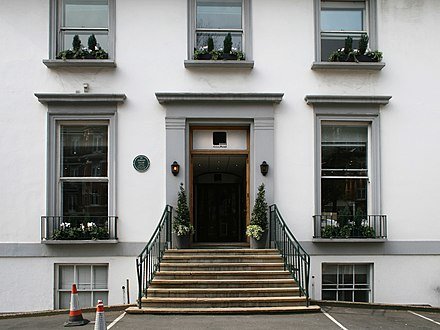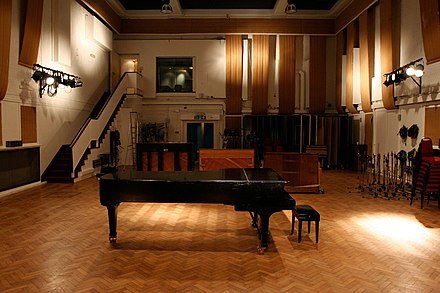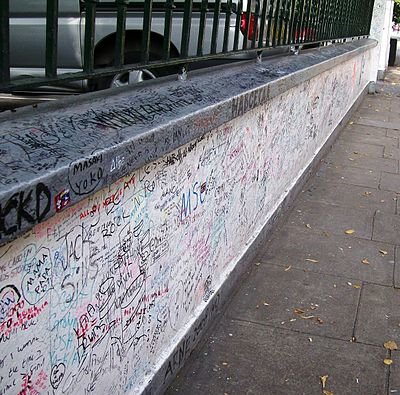British Heritage
Remember, Cherish, Learn.
beta
Abbey Road Studios
The Harmonic Legacy of Abbey Road Studios: A Landmark of British Cultural Heritage.
The story of Abbey Road Studios is an epic symphony, interweaving artistry and technological innovation. This world-renowned recording studio in London's St John's Wood has been an influential player in the evolution of music for almost a century, shaping Britain's cultural heritage in the process.
Established in November 1931 by the Gramophone Company, a forerunner of the iconic British music company EMI, Abbey Road Studios has stood as a beacon of the music industry from its origins. Nestled in a Georgian townhouse built in 1831, the structure originally boasted nine bedrooms before it was converted into flats. It subsequently underwent another transformation when the Gramophone Company bought the premises in 1929 and converted it into a studio complex. This complex was expanded further by leveraging the generous garden behind the townhouse, thereby augmenting the studios' capacity considerably.
Abbey Road Studios made an indelible impression from the outset. The grand opening in 1931 was filmed by Pathé, featuring renowned composer Sir Edward Elgar conducting the London Symphony Orchestra. The Studio's innovation journey continued with Alan Blumlein, the inventor of stereo sound, recording Mozart's Jupiter Symphony in 1934 at the premises.
The Gramophone Company amalgamated with the Columbia Graphophone Company in 1931 to form Electric and Musical Industries (EMI), from which the original EMI Studios name derived. From the mid-1930s, the studio became a cradle for significant artistic innovations, with cellist Pablo Casals recording Bach's Cello Suites No. 1 & 2 at the behest of EMI's Fred Gaisberg. This event marked a significant milestone in music history, sparking a renaissance amongst Bach aficionados and cellists.
Studio Two at Abbey Road became a heartbeat of rock and roll music in 1958 when Cliff Richard and the Drifters (later known as Cliff Richard and the Shadows) recorded "Move It." The studio's adoption by rock and roll acts signaled its readiness to embrace the new wave of popular music, further cementing its place in British cultural heritage.
The pivotal turning point for Abbey Road Studios was its association with The Beatles. From 1962 to 1970, the band used the studios as their creative playground, crafting their innovative albums using the cutting-edge technology available. Their seminal 1969 album, Abbey Road, immortalised the studio, leading to its renaming in the 1970s to reflect its association with the iconic band. The nearby zebra crossing, which featured on the album cover, became a pilgrimage site for Beatles fans worldwide, further elevating the studio's cultural significance.
Abbey Road Studios has always been a nexus for technical ingenuity. From Fred Gaisberg, who established London's first recording studio, to Ken Townsend, who invented automatic double tracking (ADT), a plethora of talent has contributed to the studio's reputation. Other notables include George Martin, Geoff Emerick, and Alan Parsons, who all played pivotal roles in shaping the studio's sound and contributing to its enduring legacy.
In 1979, the British jazz fusion band Morrissey-Mullen was commissioned by EMI to record Britain's first digitally recorded single at Abbey Road, marking another innovative milestone for the studio.
Abbey Road's innovative legacy extended into film scoring when Anvil Post Production partnered with the studio in 1980 to form Anvil-Abbey Road Screen Sound. This collaboration marked the studio's first foray into film scoring, a venture that continued successfully after the partnership ended in 1984.
The turn of the 21st century was a period of transition and adaptation for Abbey Road. The studio welcomed diverse artists such as Kanye West and South Korean boy band Shinee, broadening its musical spectrum. Following the takeover of EMI by Universal Music in 2012, the ownership of Abbey Road Studios was transferred to Virgin Records.
Despite the threat of sale and possible redevelopment into luxury flats in 2010, a public outcry and "Save Abbey Road Studios" campaign led to the British government granting English Heritage Grade II listed status to the studio. This protective status preserves the studios from major alterations, ensuring its continued operation as a landmark of British cultural heritage.
In March 2015, the Abbey Road Institute was established, offering global education in music production and audio engineering. The institute perpetuates Abbey Road Studios' legacy, educating the next generation of sound engineers and producers in the spirit of its illustrious predecessors.
Abbey Road Studios is more than a recording studio. It has been, and continues to be, a place where creativity, technological innovation, and cultural heritage intersect. Its impact on the British music industry, and indeed the world, is incalculable, shaping the sound of generations and creating a cultural resonance that will continue to reverberate into the future.
Foundational Notes: Establishing Abbey Road Studios
Established in November 1931 by the Gramophone Company, a forerunner of the iconic British music company EMI, Abbey Road Studios has stood as a beacon of the music industry from its origins. Nestled in a Georgian townhouse built in 1831, the structure originally boasted nine bedrooms before it was converted into flats. It subsequently underwent another transformation when the Gramophone Company bought the premises in 1929 and converted it into a studio complex. This complex was expanded further by leveraging the generous garden behind the townhouse, thereby augmenting the studios' capacity considerably.
Abbey Road Studios made an indelible impression from the outset. The grand opening in 1931 was filmed by Pathé, featuring renowned composer Sir Edward Elgar conducting the London Symphony Orchestra. The Studio's innovation journey continued with Alan Blumlein, the inventor of stereo sound, recording Mozart's Jupiter Symphony in 1934 at the premises.
The Birth of a Sound Revolution
The Gramophone Company amalgamated with the Columbia Graphophone Company in 1931 to form Electric and Musical Industries (EMI), from which the original EMI Studios name derived. From the mid-1930s, the studio became a cradle for significant artistic innovations, with cellist Pablo Casals recording Bach's Cello Suites No. 1 & 2 at the behest of EMI's Fred Gaisberg. This event marked a significant milestone in music history, sparking a renaissance amongst Bach aficionados and cellists.
Studio Two at Abbey Road became a heartbeat of rock and roll music in 1958 when Cliff Richard and the Drifters (later known as Cliff Richard and the Shadows) recorded "Move It." The studio's adoption by rock and roll acts signaled its readiness to embrace the new wave of popular music, further cementing its place in British cultural heritage.
A Studio Iconised by The Beatles
The pivotal turning point for Abbey Road Studios was its association with The Beatles. From 1962 to 1970, the band used the studios as their creative playground, crafting their innovative albums using the cutting-edge technology available. Their seminal 1969 album, Abbey Road, immortalised the studio, leading to its renaming in the 1970s to reflect its association with the iconic band. The nearby zebra crossing, which featured on the album cover, became a pilgrimage site for Beatles fans worldwide, further elevating the studio's cultural significance.
Pioneers of Sound Engineering
Abbey Road Studios has always been a nexus for technical ingenuity. From Fred Gaisberg, who established London's first recording studio, to Ken Townsend, who invented automatic double tracking (ADT), a plethora of talent has contributed to the studio's reputation. Other notables include George Martin, Geoff Emerick, and Alan Parsons, who all played pivotal roles in shaping the studio's sound and contributing to its enduring legacy.
In 1979, the British jazz fusion band Morrissey-Mullen was commissioned by EMI to record Britain's first digitally recorded single at Abbey Road, marking another innovative milestone for the studio.
A Cinematic Symphony: Film Scoring at Abbey Road
Abbey Road's innovative legacy extended into film scoring when Anvil Post Production partnered with the studio in 1980 to form Anvil-Abbey Road Screen Sound. This collaboration marked the studio's first foray into film scoring, a venture that continued successfully after the partnership ended in 1984.
The 21st Century: Adaptation and Survival
The turn of the 21st century was a period of transition and adaptation for Abbey Road. The studio welcomed diverse artists such as Kanye West and South Korean boy band Shinee, broadening its musical spectrum. Following the takeover of EMI by Universal Music in 2012, the ownership of Abbey Road Studios was transferred to Virgin Records.
Despite the threat of sale and possible redevelopment into luxury flats in 2010, a public outcry and "Save Abbey Road Studios" campaign led to the British government granting English Heritage Grade II listed status to the studio. This protective status preserves the studios from major alterations, ensuring its continued operation as a landmark of British cultural heritage.
Educating the Next Generation: Abbey Road Institute
In March 2015, the Abbey Road Institute was established, offering global education in music production and audio engineering. The institute perpetuates Abbey Road Studios' legacy, educating the next generation of sound engineers and producers in the spirit of its illustrious predecessors.
Conclusion: An Enduring Legacy
Abbey Road Studios is more than a recording studio. It has been, and continues to be, a place where creativity, technological innovation, and cultural heritage intersect. Its impact on the British music industry, and indeed the world, is incalculable, shaping the sound of generations and creating a cultural resonance that will continue to reverberate into the future.
- Abbey Road Studiosen.wikipedia.org








